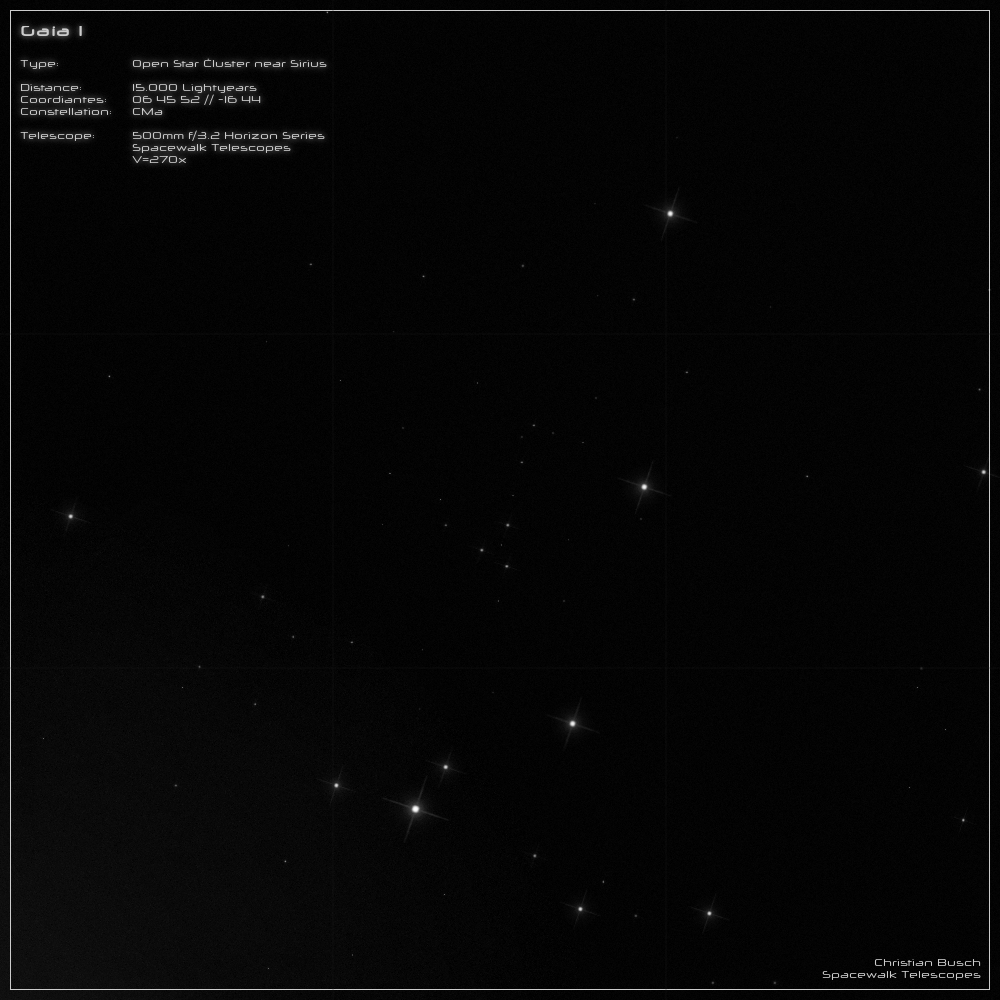Gaia 1, Open Star Cluster
On a clear, cold winter night, a star shines whitish in the south, sparkling brighter and more intense than all other stars. It is Sirius in the constellation "Canis Major", about
8.6 light years away from us. This brightest star in the firmament is 10,000 degrees hot and shines 25x brighter than our sun. If you point a 20 inch telescope at Sirius and
look into the eyepiece, you will be dazzled by a glistening bright star that sparkles in all colors of the rainbow when the seeing is not so good. Four bright spikes protrude
like lightsabers into the surrounding darkness, just beside them an extremely faint spot of light - Sirius B, a white dwarf.
It is this bright shine of light that has guarded a secret for many centuries, because a cluster of stars hides in the rays of Sirius. This cluster of stars was found just in 2017
in the data of the astrometry satellite "GAIA" and therefore named "Gaia 1".
In a sphere of 29 light-years diameter 22,000 solar masses gather - 1200 stars down to the 19th magnitude class are said to belong to this cluster. It is fascinating that this
huge collection of stars could hide for such a long time.
----------------------------------------------------------------------------------------------------------------------------------------------
Under the dark sky at 1,000mNN I pointed my 20" f/3.2 telescope at Sirius. Dazzled by the bright glow I shimmied along some stars to the position of "Gaia 1". Once there,
I cranked up the magnification to 270x, therefore keeping Sirius out of the field of view. Four brighter stars with 12-13mag were easy to recognize. But then it became
difficult. Only 10' from Sirius, the halo protruded well into the field of view, always reminding me of the danger of Sirius accidentally coming into the field of view and
robbing me of dark adaptation.
And so for the next 45 minutes I tried to cross off as many stars as I could on my chart. Most of them were only visible with indirect vision - but with a brightness of 15mag
and fainter this was to be expected. Some flashed only briefly and were swallowed up by darkness again, three times I was blinded by Sirius and had to wait a few minutes
until the dark adaptation was rebuilt and I could start again.
At the end of this three-quarters of an hour, 25 stars had received a cross - unfortunately only a very small fraction of the many stars on the chart. It was a difficult observation,
but exciting!

